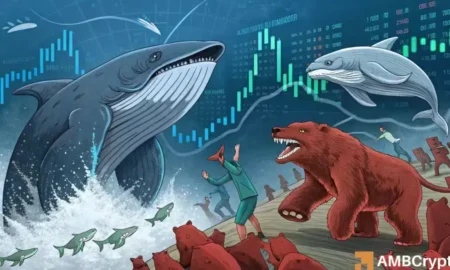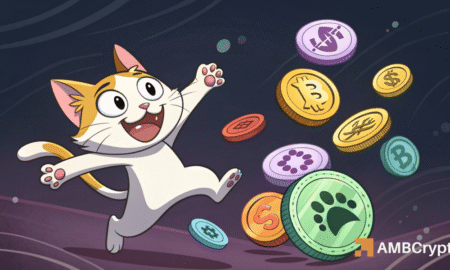Uniswap (UNI) Price Rally: Analyzing Recent Trends and Future Outlook
Uniswap (UNI) has experienced remarkable volatility and significant price movement, especially following a notable rally earlier this week. The most prominent spike occurred on Monday, with UNI skyrocketing by 42% following a fundamental proposal involving the burning of millions of UNI tokens. This strategic move is anticipated to reduce supply and reward loyal token holders, thereby driving investor interest. However, the question remains: is this a sustainable buy signal for long-term investors, or should they wait for a potential price dip?
Uniswap’s Recent Price Movements
Uniswap’s price rally can be directly attributed to developments such as the UNIfication proposal announced on November 10 and the plans for a UNI buyback, both of which have fostered a bullish sentiment in the market. On the 1-day price chart, Uniswap managed to regain its bullish structure by breaching the previous downtrend’s lower high at $8.6. This bullish momentum was further supported by a significant rally that saw prices move above key intermediate levels, including the short-term support level at $6.88. However, while the upward price action appears promising, caution is warranted.
Assessing Market Signals
Despite the overall bullish tone, recent trading signals suggest a more cautious outlook. The On-Balance Volume (OBV) indicator presents a cautionary tale; while buying volume initially catalyzed the rally, selling pressure began to mount as prices climbed above the $9 mark. Technical analysis via Fibonacci retracement levels outlines potential dips to as low as $6.86 and $5.92, suggesting that traders should be prepared for a possible correction before committing to long positions.
Short-term Analysis and Potential Resistance
Diving deeper into the lower timeframes, the trend in the OBV becomes even more troubling. The 1-hour chart indicates a declining OBV trend over the past 48 hours, illustrating a struggle to maintain momentum at higher price levels. While the $8.1-$8.5 demand zone has flipped from a support level to acting as resistance, there remains uncertainty about whether UNI can sustain its advance past this critical threshold. The Money Flow Index (MFI) suggests isolated bullish momentum, but it may not be sufficient to overcome the resistance at $8.6.
Market Sentiment and Open Interest Dynamics
Market sentiment has shifted in recent days, affecting the trading landscape for UNI. As of November 11, rising Open Interest (OI) and high funding rates contributed to a strong short-term bullish outlook. However, recent data indicates a decline in OI and a drop in funding rates, with some indicators slipping into bearish territory. This decline in OI is compounded by an increase in long liquidations, which suggests a potential shift favoring bearish traders. The combination of long liquidations and reduced buying pressure may lead UNI toward a deeper retracement and further test support levels.
Investor Considerations: Buy Now or Wait?
For potential investors, the pressing question is whether now is the right time to buy UNI. While the recent rally might suggest a “buy now” signal for long-term holders, it’s critical to take into account the favorable conditions for a price dip. Given the current market dynamics and technical indicators, it may be wise for traders to exercise patience and wait for a clearer signal before entering new positions.
Concluding Thoughts
In summary, Uniswap’s recent price movements and strategic proposals have created an intriguing, albeit complex, landscape for investors. The price rally sparked by token burns and bullish sentiments has encountered unexpected selling pressures, raising concerns about sustainability. As traders and investors weigh their options amidst fluctuating market conditions, remaining vigilant to technical indicators and macro trends will be essential to navigate this volatile environment effectively.
Disclaimer: The perspectives presented herein do not constitute financial or investment advice and are solely based on the author’s analysis.
















